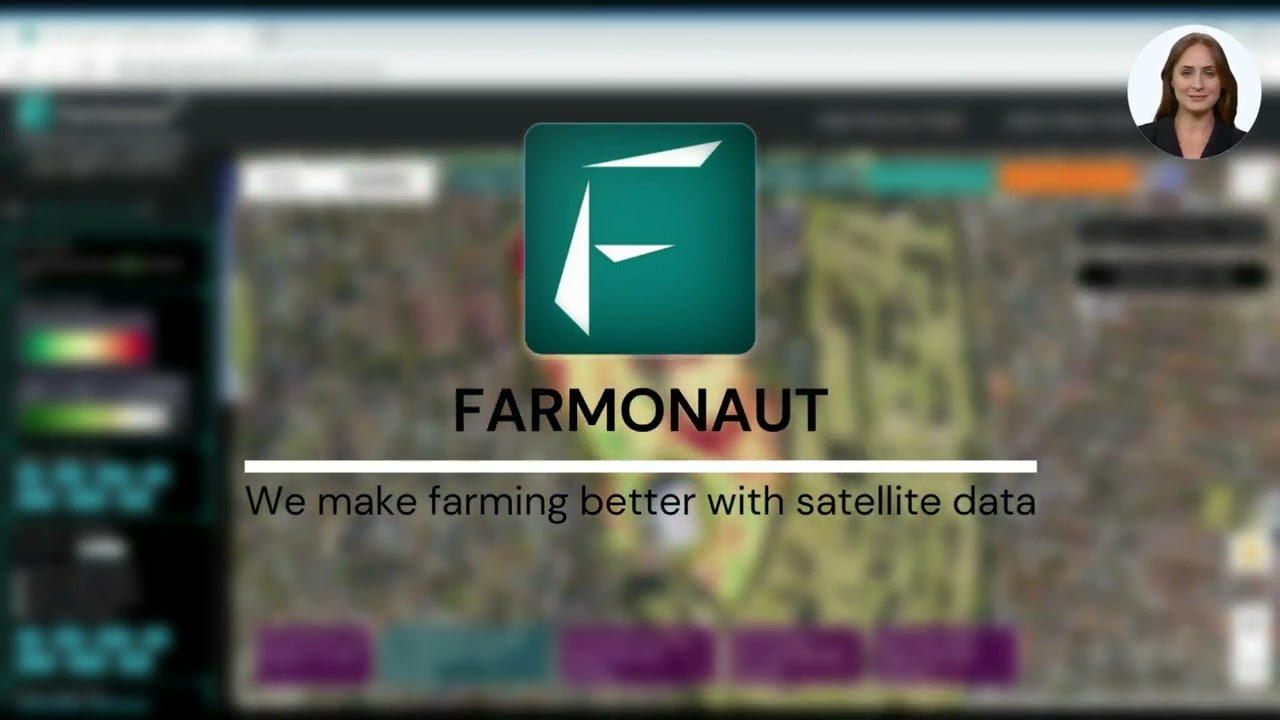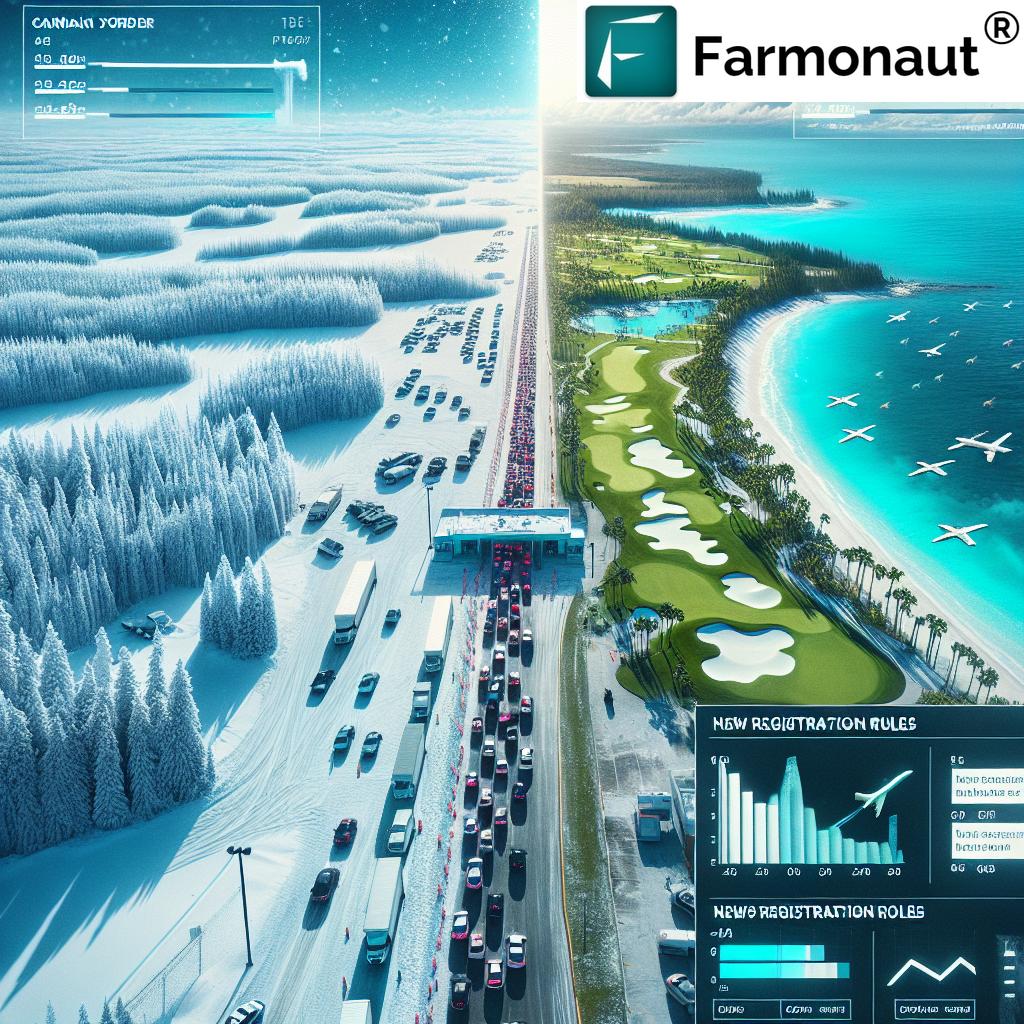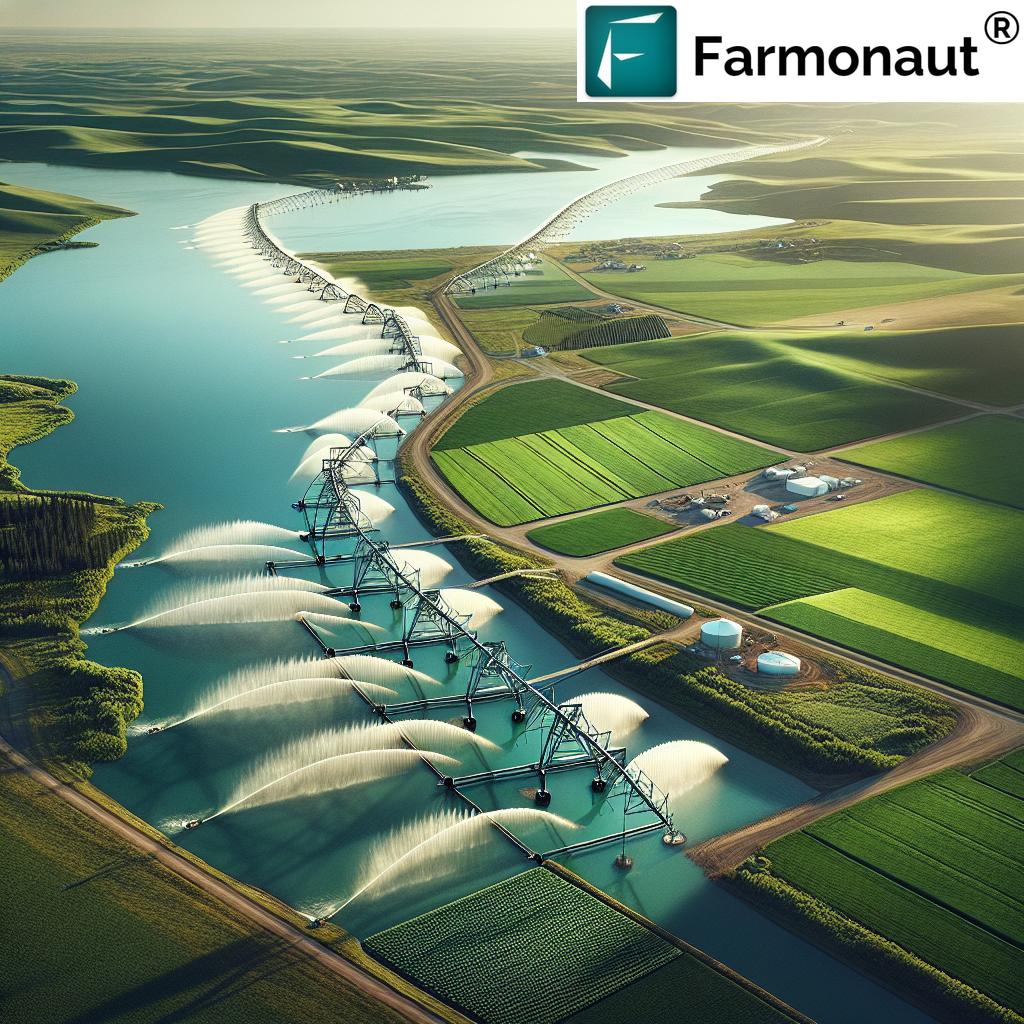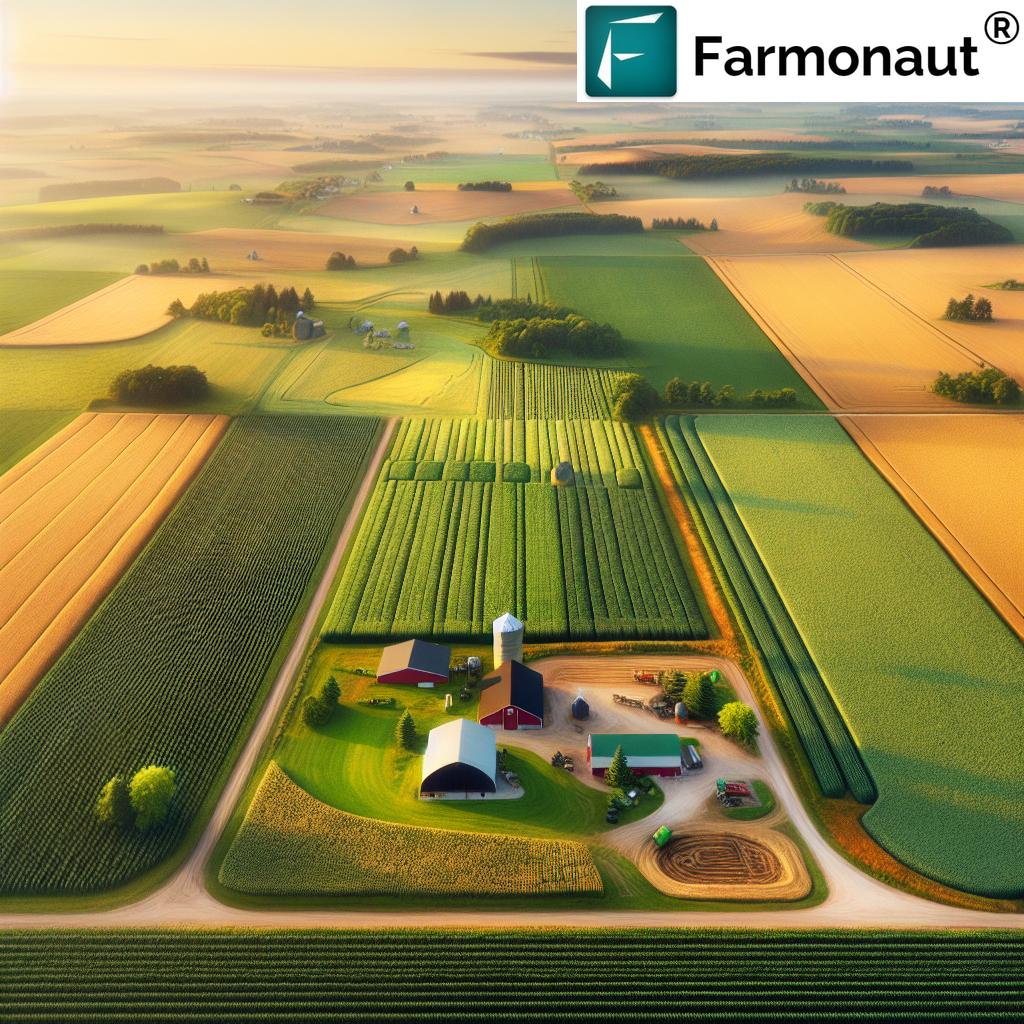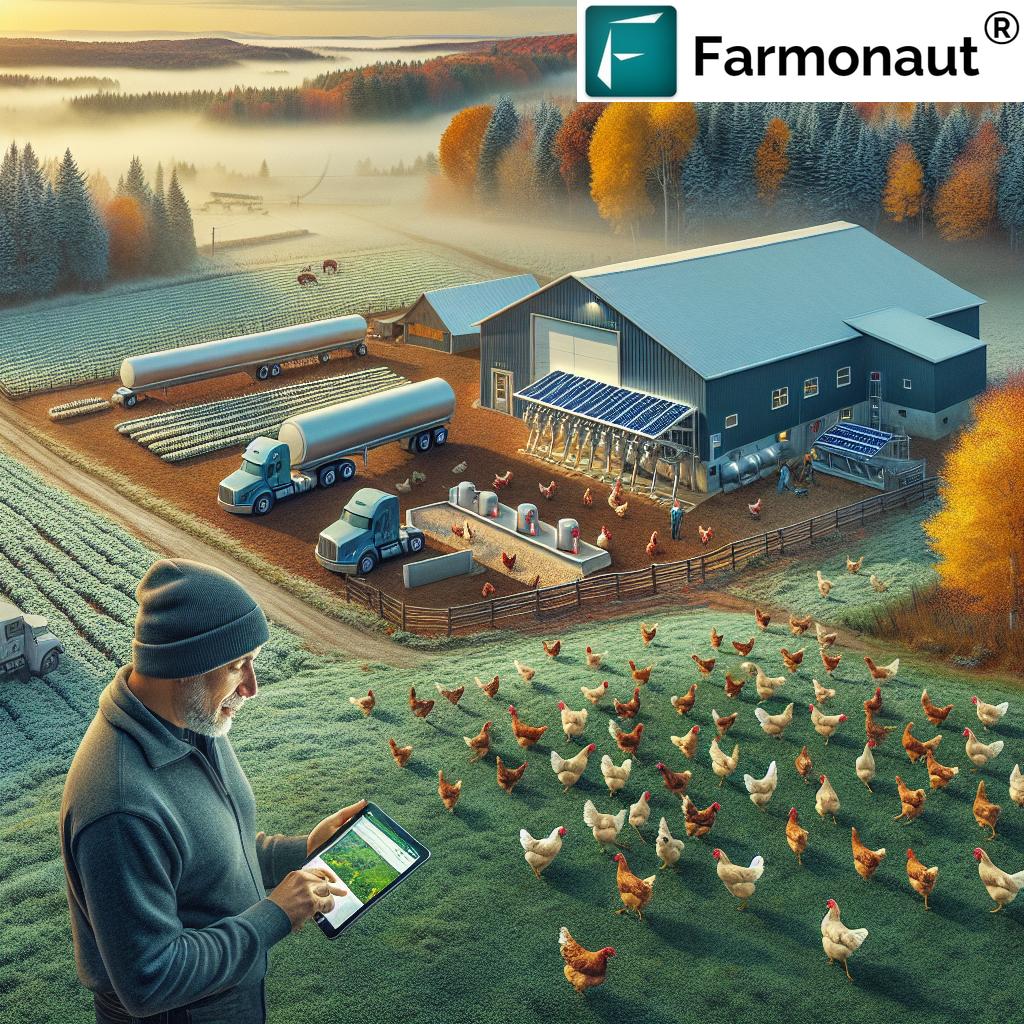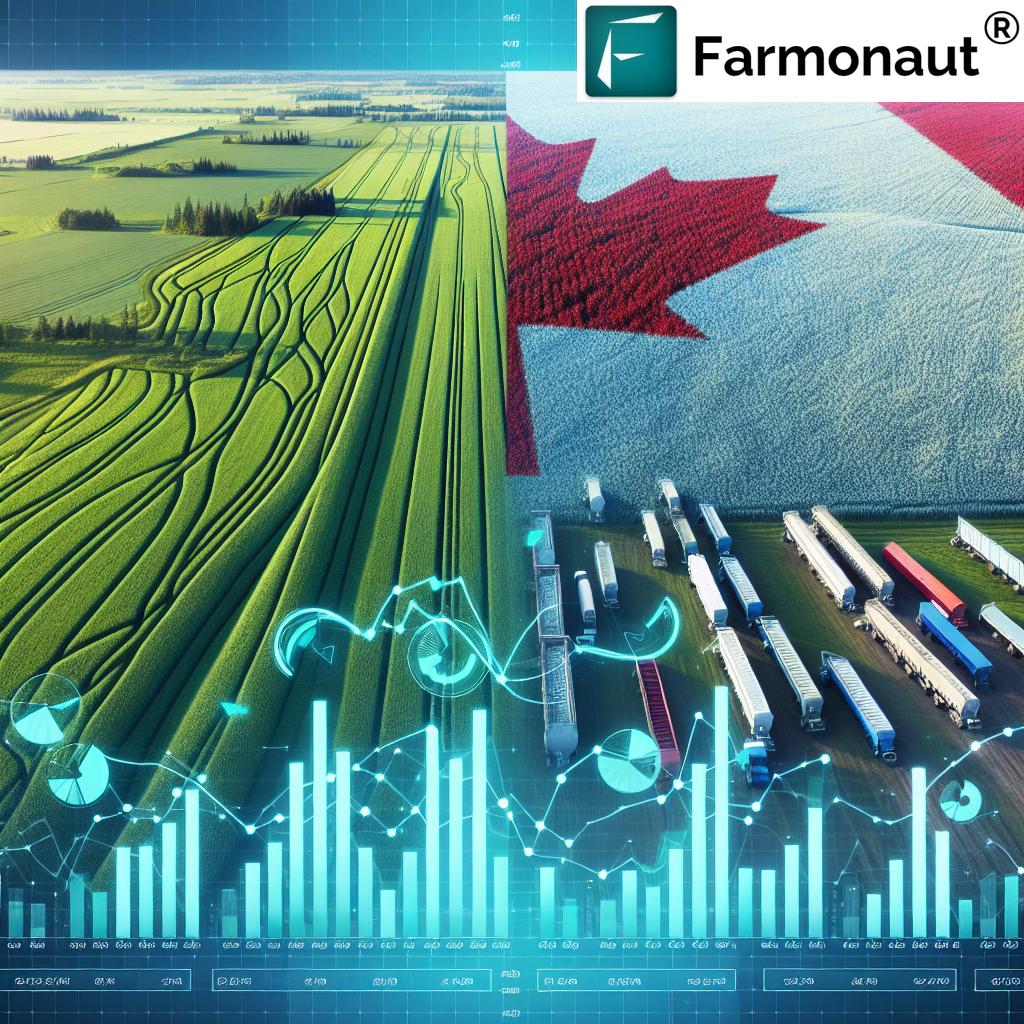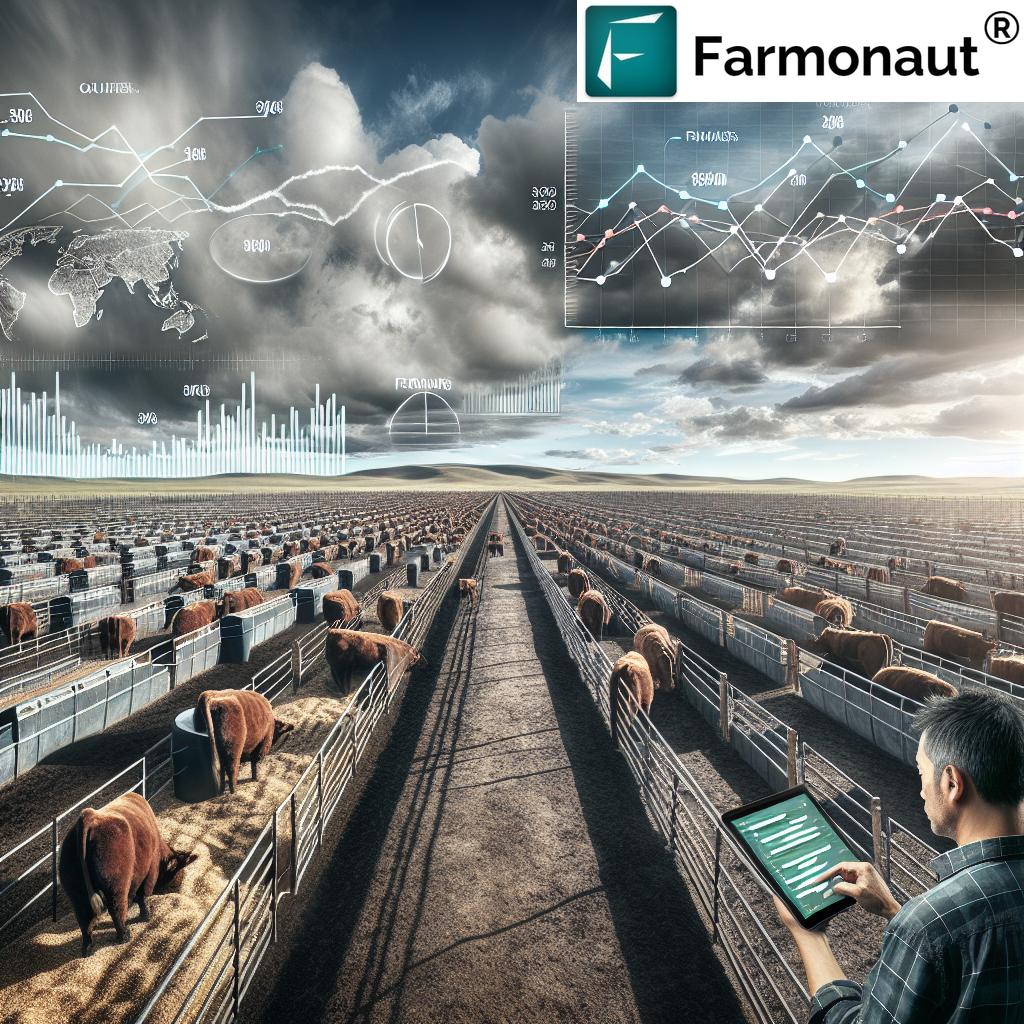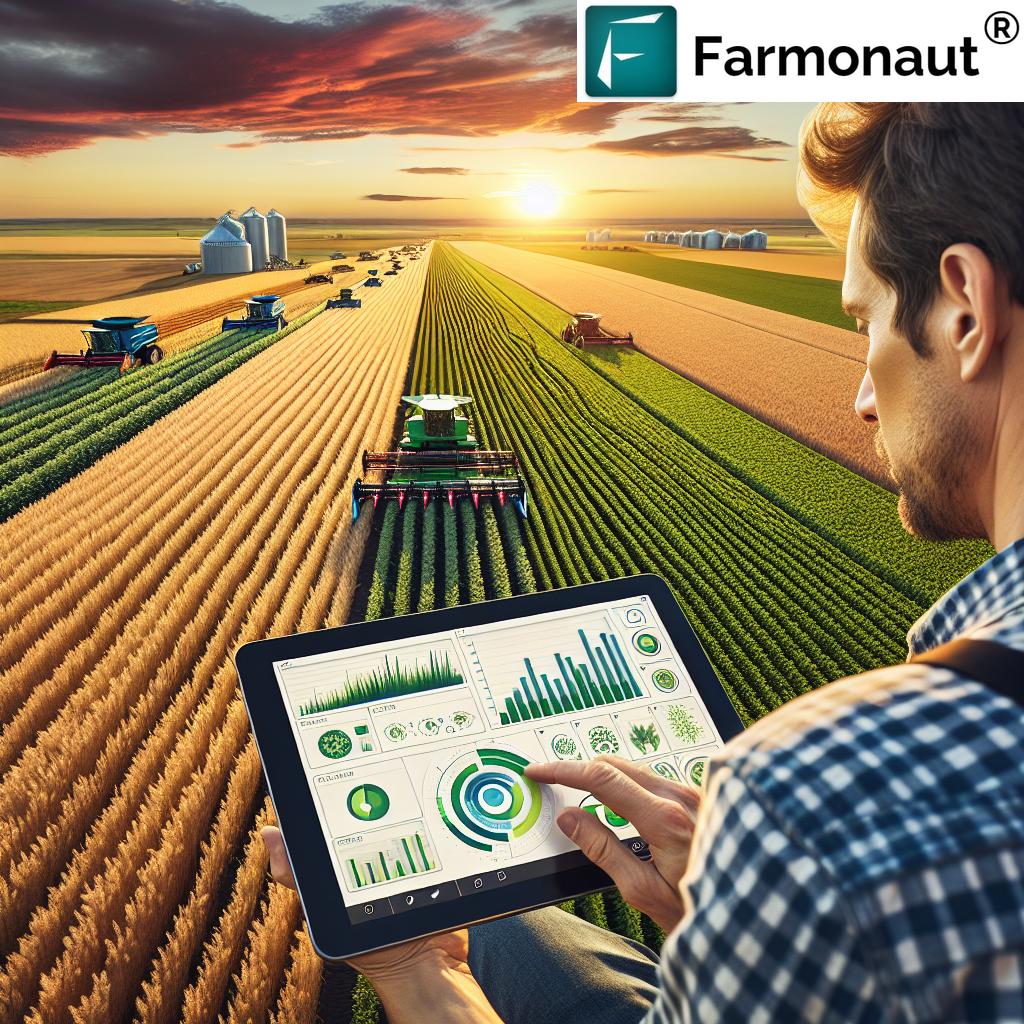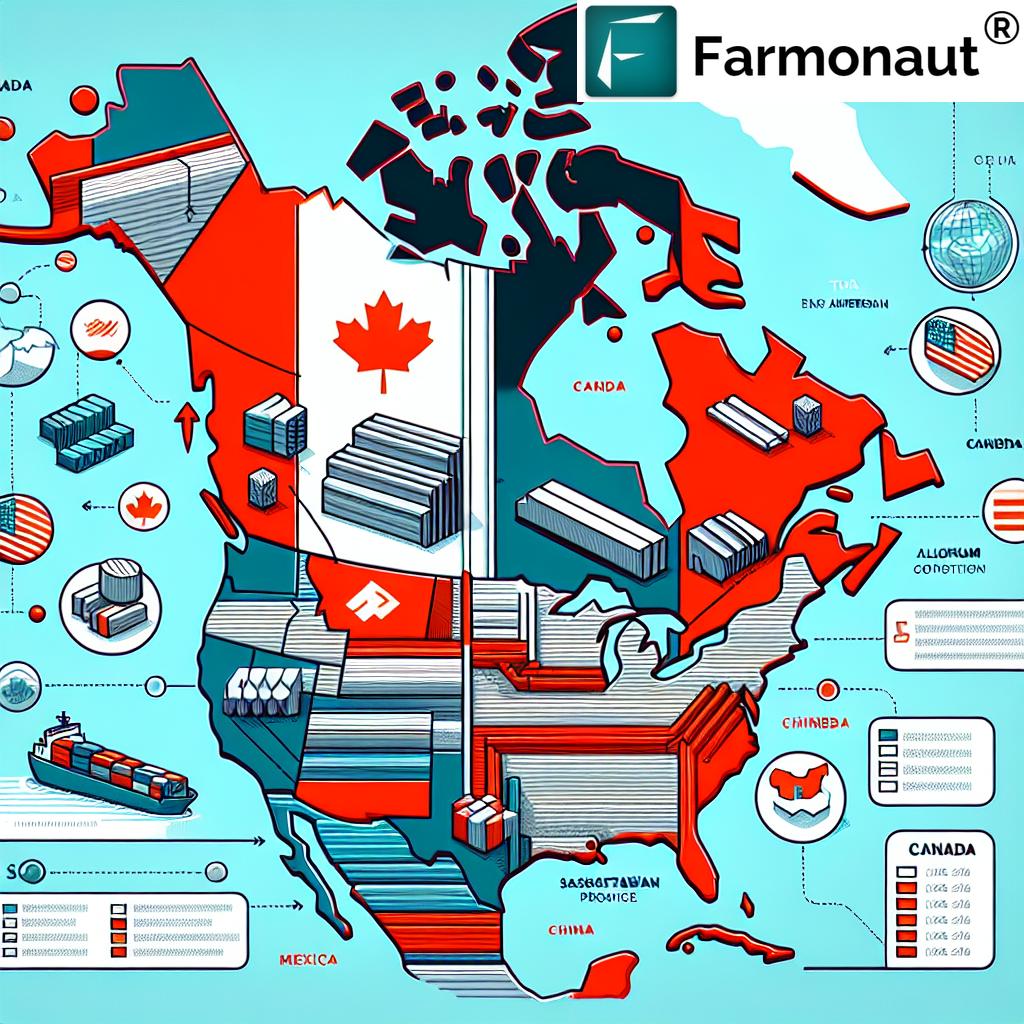Ontario’s Agricultural Land Rezoning: Balancing Economic Growth and Farmland Preservation
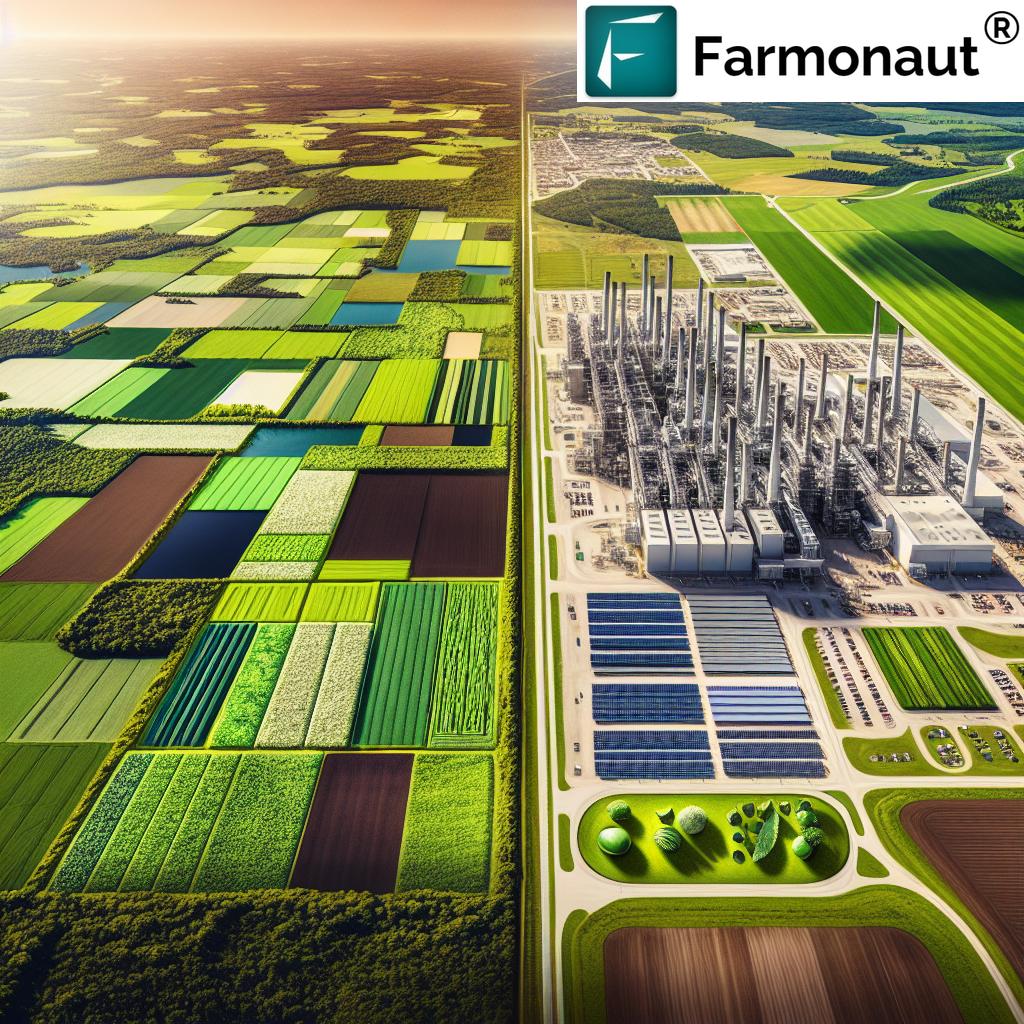
“Ontario’s recent rezoning decision affects prime farmland, impacting approximately 2,000 acres of agricultural land.”
In the ever-evolving landscape of Ontario’s agricultural and industrial sectors, we find ourselves at a critical juncture. The recent ministerial zoning order (MZO) granted to Sarjeant Co. has ignited a passionate debate about the delicate balance between economic progress and environmental stewardship. As we delve into this complex issue, we at Farmonaut recognize the pivotal role that innovative agritech solutions can play in navigating these challenges.
The Rezoning Decision: A Game-Changer for Ontario’s Landscape
On December 23, Paul Calandra, the Minister of Municipal Affairs and Housing, announced a decision that would significantly alter the agricultural and industrial fabric of Bradford, Ontario. This MZO allows Sarjeant Co. to relocate its concrete batching plant from Sideroad 10 to a new site on Sideroad 5, marking the culmination of a two-year effort by the company’s owner and CEO, Scott Elliott.
The catalyst for this move was the Ontario Ministry of Transportation’s expropriation of Sarjeant’s property in 2022 for the Bradford Bypass highway project. With deadlines looming – initially July 2024, later extended to December 2024 – the company faced an urgent need to find a new home for its operations.
- The new location offers space for future expansion
- Easy access to major transportation routes
- Minimizes disruption from truck traffic in urban Bradford
Mayor James Leduc has expressed strong support for the decision, emphasizing the importance of retaining local jobs and the potential for new employment opportunities. This move aligns with the town’s economic growth strategy, but it also raises important questions about land use and environmental impact.
The MZO Process: Streamlining Development
The ministerial zoning order is a powerful tool that streamlines the rezoning process, allowing for quicker development in areas deemed critical for economic growth. In this case, it facilitates:
- Rezoning of agricultural land for industrial use
- Establishment of temporary and permanent facilities
- Addition of amenities like electric vehicle charging stations
While this expedited process can be beneficial for businesses and local economies, it also bypasses some of the traditional safeguards in land use planning, such as public consultation and appeal processes. This aspect of the MZO has been a point of contention among environmental groups and local farmers.
For a deeper understanding of how satellite technology is revolutionizing land use in agriculture, watch this informative video:
Agricultural Community Concerns: Protecting Prime Farmland
The decision to rezone agricultural land for industrial use has not been without controversy. The Holland Marsh Growers’ Association has formally objected to the establishment of the concrete plant at this new site, citing concerns about:
- Loss of prime agricultural land
- Potential environmental impacts on nearby protected waterways
- Long-term effects on the local farming community
These objections highlight the ongoing tension between industrial development and agricultural preservation, a challenge that many communities face as they strive for economic growth while maintaining their agricultural heritage.
At Farmonaut, we understand the importance of preserving agricultural land while supporting economic development. Our satellite-based farm management solutions can help optimize land use and improve agricultural productivity. Learn more about our services by visiting our web app.
Economic Impact: Job Retention and Growth
“The industrial facility relocation in Ontario is expected to retain over 1,500 jobs and potentially create 500 new positions.”
The relocation of Sarjeant Co.’s concrete batching plant is not just about moving a facility; it’s about securing jobs and fostering economic growth in the region. The move is expected to:
- Retain existing jobs at Sarjeant Co.
- Create potential new employment opportunities
- Support the local construction industry
- Contribute to the broader economic development of Bradford
However, the transition has not been without challenges. The closure of the Bradford site has resulted in temporary layoffs, and the company has had to rely on its Barrie location to service customer needs. This situation underscores the importance of a smooth and timely relocation process.
Environmental Considerations: Balancing Progress and Preservation
While the economic benefits of the rezoning are clear, the environmental implications require careful consideration. The new site’s proximity to protected waterways and its current status as prime agricultural land raise important questions about:
- Soil quality preservation
- Water resource management
- Biodiversity conservation
- Long-term ecological impact
These concerns necessitate a comprehensive environmental assessment and the implementation of stringent mitigation measures. The development agreement for the new site will need to address these issues before operations can commence.
Farmonaut’s satellite-based crop health monitoring and AI advisory systems can play a crucial role in assessing and mitigating environmental impacts. Our technology provides real-time insights into vegetation health, soil moisture levels, and other critical metrics. Explore our solutions on our Android app or iOS app.
Smart Agriculture Infrastructure: A Path Forward
As we navigate the complexities of land use planning and sustainable development, the role of smart agriculture infrastructure becomes increasingly important. Innovative agritech solutions can help bridge the gap between economic growth and environmental preservation by:
- Optimizing land use through precision agriculture techniques
- Enhancing crop yields on existing farmland
- Reducing the environmental footprint of agricultural operations
- Providing data-driven insights for better land management decisions
By leveraging these technologies, we can work towards a future where industrial expansion and agricultural preservation are not mutually exclusive goals.
Farmonaut’s advanced agri-solutions, including our precision crop area estimation tools, can assist in optimizing land use and agricultural productivity. Watch this case study to see how our technology is making a difference:
Comparative Analysis of Land Use Changes in Ontario
| Land Use Category | Pre-Rezoning Area (ha) | Post-Rezoning Area (ha) | Net Change (ha/%) | Economic Impact (Jobs) | Environmental Considerations |
|---|---|---|---|---|---|
| Prime Farmland | 810 | 800 | -10 / -1.23% | N/A | Soil quality preservation measures required |
| Industrial Facilities | 50 | 60 | +10 / +20% | 1,500 retained, 500 new | Environmental impact assessment needed |
| Natural Habitats | 140 | 140 | 0 / 0% | N/A | Protection of nearby waterways crucial |
This table provides a clear overview of the land use changes resulting from the rezoning decision. It highlights the slight reduction in prime farmland, the expansion of industrial facilities, and the potential economic benefits in terms of job retention and creation. The environmental considerations column emphasizes the need for careful planning and mitigation strategies to minimize the ecological impact of these changes.
The Role of Technology in Sustainable Land Use Planning
As we grapple with the challenges of balancing economic growth and farmland preservation, technology emerges as a crucial ally. Advanced agricultural technologies can help us make more informed decisions about land use and optimize the productivity of existing farmland. Here’s how:
- Satellite imagery for precise land mapping and monitoring
- AI-driven crop management systems for increased yields
- Blockchain technology for transparent land use tracking
- IoT sensors for real-time environmental monitoring
Farmonaut’s suite of technologies, including our satellite-based crop health monitoring and AI advisory systems, can provide valuable insights for sustainable land use planning. Our API services offer developers and businesses the ability to integrate these powerful tools into their own systems. Learn more about our API at Farmonaut API and explore our developer documentation at API Developer Docs.
By leveraging these technologies, we can work towards a future where industrial expansion and agricultural preservation coexist harmoniously. The key lies in smart planning, data-driven decision-making, and the adoption of innovative agritech solutions.
Community Impact and Future Considerations
The rezoning decision in Bradford is not just about one company or one piece of land; it’s about the broader community and its future. As we move forward, it’s crucial to consider:
- The long-term effects on local farming communities
- The potential for creating a balanced, diversified local economy
- The importance of maintaining green spaces and agricultural heritage
- The need for ongoing dialogue between industry, agriculture, and environmental stakeholders
Mayor Leduc’s efforts to find alternative sites for other local businesses affected by the Bradford Bypass project demonstrate the ongoing challenges of urban planning and development. It’s a delicate balancing act that requires careful consideration of multiple factors.
At Farmonaut, we believe that technology can play a crucial role in facilitating this balance. Our time-lapse feature, for example, can help planners and policymakers visualize land use changes over time, informing better decision-making. See how it works in this video:
The Path Forward: Innovative Solutions for Sustainable Growth
As we look to the future, it’s clear that the challenges of balancing economic growth and farmland preservation will persist. However, with innovative approaches and the right technologies, we can forge a path that respects both our economic needs and our environmental responsibilities. Here are some key strategies to consider:
- Implementing smart zoning policies that prioritize brownfield development
- Investing in vertical farming and urban agriculture initiatives
- Promoting agri-tourism to diversify farm income streams
- Developing comprehensive land use plans that incorporate both agricultural and industrial needs
- Utilizing advanced technologies for more efficient land use and farming practices
Farmonaut’s satellite-based solutions are at the forefront of this technological revolution in agriculture. Our platform helps farmers and policymakers make data-driven decisions that can lead to more sustainable land use practices. Learn more about how we’re making farming better with satellite data:
Conclusion: A Balanced Approach to Growth and Preservation
The rezoning decision in Ontario serves as a microcosm of the broader challenges facing communities worldwide. As we strive for economic growth and job creation, we must also safeguard our agricultural heritage and environmental resources. The path forward requires:
- Thoughtful planning and policy-making
- Engagement with all stakeholders, including farmers, industry leaders, and environmentalists
- Adoption of innovative technologies to optimize land use and agricultural productivity
- A commitment to sustainable development practices
By embracing these principles and leveraging advanced agritech solutions, we can work towards a future where economic progress and environmental stewardship go hand in hand. The decisions we make today will shape the landscape of tomorrow, and it’s our responsibility to ensure that we leave a legacy of balanced, sustainable growth for future generations.
Farmonaut Subscriptions
Frequently Asked Questions (FAQ)
Q1: What is a ministerial zoning order (MZO), and how does it affect land use planning?
A1: A ministerial zoning order is a tool used by the Ontario government to fast-track development by overriding local planning processes. It allows for quicker rezoning of land, bypassing typical public consultation and appeal processes. While it can expedite economic development, it also raises concerns about transparency and environmental protection.
Q2: How does the rezoning decision impact local farmers in Bradford?
A2: The rezoning decision affects local farmers by converting prime agricultural land to industrial use. This reduction in available farmland could potentially impact agricultural production and the livelihoods of farmers in the area. However, the economic benefits of job retention and creation must also be considered in the overall impact assessment.
Q3: What role can agritech play in balancing economic growth and farmland preservation?
A3: Agritech can play a crucial role by optimizing land use through precision agriculture techniques, enhancing crop yields on existing farmland, and providing data-driven insights for better land management decisions. Technologies like satellite imaging, AI-driven crop management, and IoT sensors can help increase agricultural productivity while minimizing the need for land conversion.
Q4: How can communities ensure that economic development doesn’t come at the expense of environmental protection?
A4: Communities can balance economic development and environmental protection by implementing comprehensive land use plans, investing in smart agriculture infrastructure, promoting sustainable development practices, and utilizing advanced technologies for environmental monitoring and impact assessment. Engaging all stakeholders in the decision-making process is also crucial.
Q5: What are some long-term considerations for sustainable land use planning?
A5: Long-term considerations for sustainable land use planning include:
- Preserving biodiversity and ecosystem services
- Ensuring food security through protection of prime agricultural lands
- Adapting to climate change impacts on land use
- Balancing urban expansion with green space preservation
- Implementing policies that encourage brownfield development over greenfield conversion
As we navigate these complex issues, it’s clear that innovative solutions and thoughtful planning are key to creating a sustainable future that balances economic growth with environmental stewardship. By leveraging advanced technologies and embracing smart agriculture practices, we can work towards a future where both industry and agriculture thrive in harmony with our natural environment.







